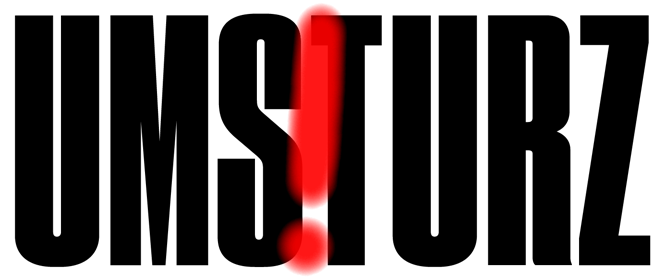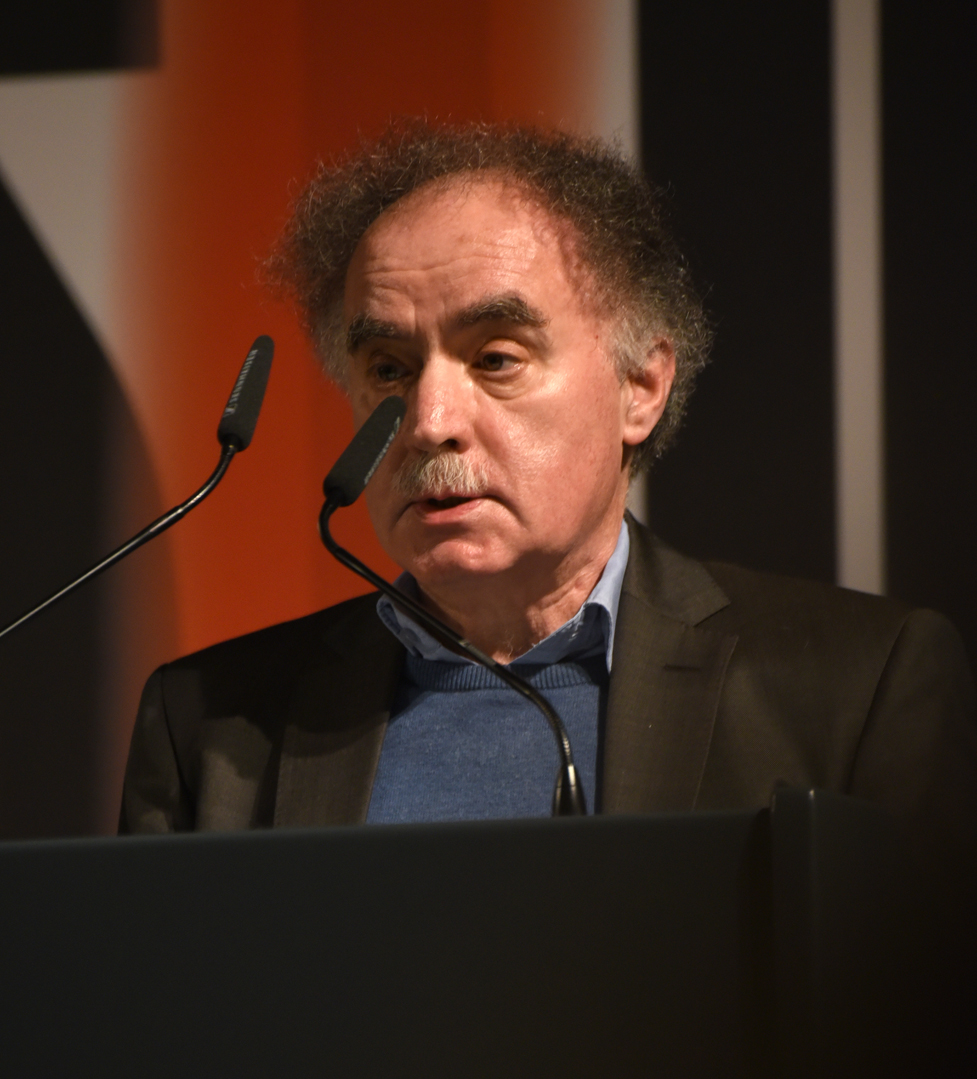
The World Revolution That Wasn’t
The revolutionary events in Russia between 1917 and 1922 were a decisive historical rupture, which shaped the entire 20th century and continues to have an impact on our own time. On its 100th anniversary, we are presenting the exhibition “1917. Revolution. Russia and Europe”, addressing the revolutionary events and their effects. For the anniversary of the October Revolution, the DHM blog has decided to publish the speech given by philosopher and author Michail Ryklin at the exhibition opening on October 17.
The event known in the Soviet Union as the Great October Socialist Revolution did not appear to its contemporaries as something monumental, despite the passionate, exuberant feelings at demonstrations, and regardless of the many corpses it produced (a number hardly comparable, of course, to the daily losses on the fronts of the First World War). Hardly anyone guessed that these events would have the historical consequences that they did.
The Winter Palace was not stormed in the way depicted by Sergei Eisenstein in his film “October” (1927). The day after the events, the British ambassador wrote in his diary:
“By half-past two in the morning, parties of the attacking force had penetrated into the palace by side entrances and disarmed the garrison. The Ministers were then arrested and marched off through hostile crowds to the fortress.”¹
The ambassador condemned the Bolsheviks’ terrorist methods, but acknowledged that Vladimir Lenin and Leon Trotsky, the revolutionary leaders, were “extraordinary people”. If they had not been present in Petrograd, he wrote, there would have been no revolution.
Among the first to capture the significance of the events was the Harvard-educated American journalist John Reed, who had shown up in Petrograd shortly before the Bolshevik insurgency. In “Ten Days That Shook the World”, a book which Lenin commended to the workers of the world, Reed wrote:
“The Bolsheviks won, because they reflected the aspirations of a broad swathe of the population. True, a day after the seizure of the Winter Palace, it seemed on the surface as though nothing had happened in the city: there were the same hours-long queues for milk, sugar and tobacco, the same exhibitions, the same theatre programme. But all the while, mighty Russia was bent in agony, giving birth to a new world.”²
Neither those directly involved in the October Revolution, nor its supporters, had any doubts that it marked the beginning of a world revolution. Russia had proven itself the weakest link in the “chain of capitalism”: this was why the chain was successfully torn apart at that point. Inevitably, they believed, it would be followed by revolutions in more highly-developed countries, where conditions were more favourable. Russia, as an under-developed agrarian country, could not long carry the “torch of communism” alone, however proudly. After a completed world revolution, the Bolsheviks would keep their glorious reputation as heralds of the revolution, but would also learn from more advanced Western communists.
In the eyes of its supporters, the October Revolution quickly took on universal significance, an event incorporated directly into the genealogy which descended from the great French Revolution. The European left rapidly recognised its leaders as like-minded figures; the right recognised them as their enemy.
This hope for world revolution, we know now, was not fulfilled, in spite of several failed attempts. The disappointed Bolsheviks, helped by the “Comintern”, began to export their experience, along with their methods for taking power “through a new party”. This experience and these methods had been put to the test in the struggle against Czarism. But such methods did not work in the West: in fact, they drove away an entire generation of revolutionary enthusiasts, previously attracted by the success of the Russian Revolution.
Another bitter disappointment awaited the revolution’s supporters. The autumn of 1918 saw the beginning of the “Red Terror”, which shocked the world with its merciless logic. It became apparent that people could be killed, not only for their actual crimes, but for simply belonging to a class declared to be exploitative. As the popular author Vladimir Korolenko, known as “Russia’s conscience”, angrily discovered, the actions of the Cheka (the “All-Russian Extraordinary Commission for Combating Counter-Revolution, Profiteering and Corruption”, which carried out the investigations leading to decisions and judgments) were unique in the history of civilised nations. Under the old regime, there had been occasional cases of blind mob violence, vigilante justice, or wayward acts of Czarist despotism. But what was truly horrific about the followers of Lenin was that they gave lawlessness a theoretical foundation. Western Marxists, from Karl Kautsky to Rosa Luxemburg, reacted just as vehemently against the Terror.
With the end of the Civil War, the arbitrary violence receded, but the revolution would always bear its stain.
At the beginning of 1921, the New Economic Policy was announced – this granted a number of concessions to the bourgeoisie, and would remain in place until 1928. During this time, the revolution showed its best side. The new culture’s achievements in architecture, theatre, art, literature and design were presented to the world and widely recognised. Women and national minorities enjoyed rights unimaginable only a few years previously. Proletarian internationalism proved to be more than just empty words: it was put into practice. And in spite of communism’s failures in Germany and China, the belief in the world revolution survived, above all among the passionate youth of the Komsomol. The reputation of the Old Bolsheviks – those who joined the Party before the revolution – was still unchallenged.
Moreover, the 1920s were a relatively prosperous period, with the Chervonets (10 roubles in gold) at a premium. The peasants, who made up the majority of the Soviet population, paid food taxes; the raids of food collectors during the Civil War became a troubling memory, a thing of the past.
All this came to an end in 1930, the year which saw the beginning of Stalin’s “Great Change” and the beginning of collectivization. Historians refer to this moment as the second revolution, the Stalinist Revolution. The “Titanic” of urban revolutionary culture sailed into the iceberg of the peasant world, and was shipwrecked. During the 1920s, Stalin – who had become general secretary of the All-Russian Communist Party (Bolsheviks) in 1922 – was regarded as “first among equals”. He fought successfully against a wide range of political “deviations”, disposing of one rival after another. Above all, he turned the party against his arch-enemy, Leon Trotsky, who he managed to have banished from the country in 1929. A word coined by Stalin – “Trotskyism” – gradually became one of the worst political stigmas, used to brand the worst enemies of “Leninism” – another of Stalin’s concepts. From this time on, it was strictly forbidden to mention Trotsky – the hero of October and a co-founder of the Red Army – in connection with the revolution or the Civil War. History was written anew. (Although, actually, at this point Stalin didn’t completely rewrite history – that would come later, in the 1930s.)
Many old Bolsheviks and Komsomolists of the 1920s were angered by collectivization and forced industrialization, coupled with a previously unimagined wave of terror, with the horrifying impoverishment of the population, and the definitive establishment of a Stalinist dictatorship. No longer “first among equals”, Stalin had by now become a “new Lenin”. In the summer of 1932, backed by the leaders of the Komsomol, the supporters of Bukharin, Zinoviev and Trotsky united to violently overthrow Stalin and his clique. Their coalition produced a manifesto, the so-called “Ryutin Platform”, whose full title was: “Stalin and the Crisis of the Proletarian Dictatorship”. This fell into the hands of the OGPU, the secret police. Stalin demanded the death penalty for Ryutin. But the measure lacked support within the Politburo (executing Old Bolsheviks was still taboo). Instead, the agitators were expelled from the party and sent into exile. Ryutin was imprisoned.
In the “Great Terror” between 1936 and 1940, the Leninist old guard were eradicated without exception in the torture chambers of the NKVD, another secret police organisation. By 1940, only a few of the active revolutionaries of 1917 were still alive: some in the dictator’s close circle, and a lucky few who could hide in places removed from public life. The repression extended to family members, even young children. Even Old Bolsheviks who had never revolted against Stalin were not spared, not even those who clung to the party line and sang hymns of praise to the dictator. They were witnesses, and thus too dangerous. Afterwards, the history of the All-Russian Communist Party (Bolsheviks) was definitively rewritten, based on Stalin’s beliefs.
I am of the conviction that a merciless and comprehensive act of violence like the one which befell an entire generation of “eyewitnesses to Lenin” is historically unique. The victims were refused burial. After being secretly shot, the victims’ corpses were either burned in crematoria and their ashes scattered, or were buried in mass graves. The burial places of the Great Terror’s victims are marked only by memorial plaques erected by surviving relatives, a symbolic reminder that these people lived.
As an event, the October Revolution directly links Russian with European and world history. It set itself the goal of burying a dying capitalism; but – contrary to the revolutionaries’ intentions and a misguided sense of “world consciousness” – it had precisely the opposite effect.
“The history of the Short Twentieth Century cannot be understood”, wrote the historian Eric Hobsbawm, “without the Russian Revolution and its direct and indirect effects. Not least because it proved to be the saviour of liberal capitalism, both by enabling the West to win the Second World War against Hitler’s Germany, and by providing the incentive for capitalism to reform itself…”³
In Russia, there are no plans for major official celebrations of the revolution’s 100th anniversary. The head of the organizing committee for such events is… the head of Russia’s foreign espionage!
It seems that those in power fear that the masses’ genetic memory might awake, that people could remember the emancipatory potential of the revolution. Under Stalin, this memory was eradicated with an iron fist.
In short, it is too early to put away the October Revolution in an archive and dismiss it as merely a historical relic. In its homeland, it forms part of the present and an object of political struggle.
Literature
¹ George Buchanan, My Mission to Russia and Other Diplomatic Memories, London: Cassell, 1923
² John Reed, Ten Days That Shook the World, 1919
³ Eric Hobsbawm, Age of Extremes: the Short Twentieth Century, 1914–1991, London: Abacus, 1994
 |
Michail RyklinMichail Ryklin, born in 1948, works at the Institute of Philosophy at the Russian Academy of Sciences in Moscow. His book-length essay “The Law of the Strongest” was published in 2007, and was awarded the Leipzig Book Fair Prize for European Understanding in the same year. |